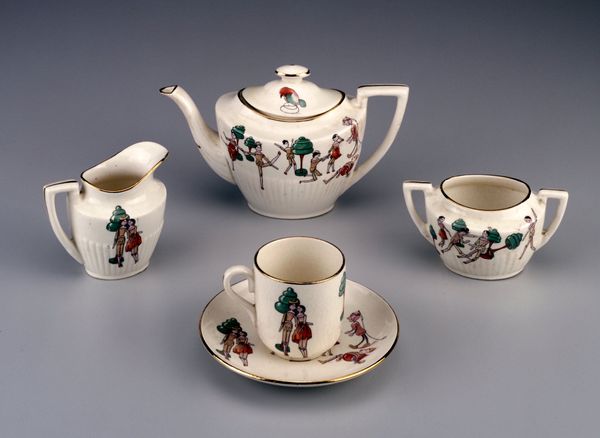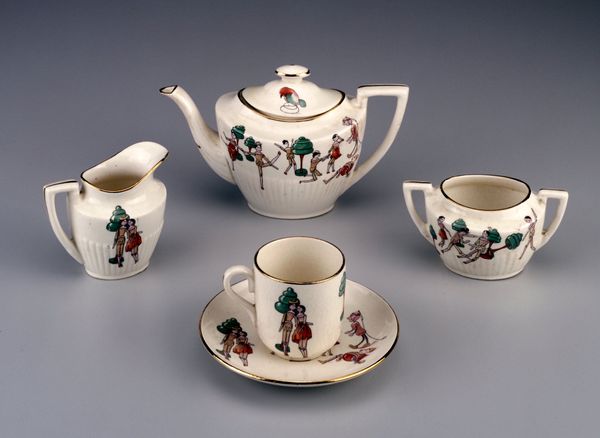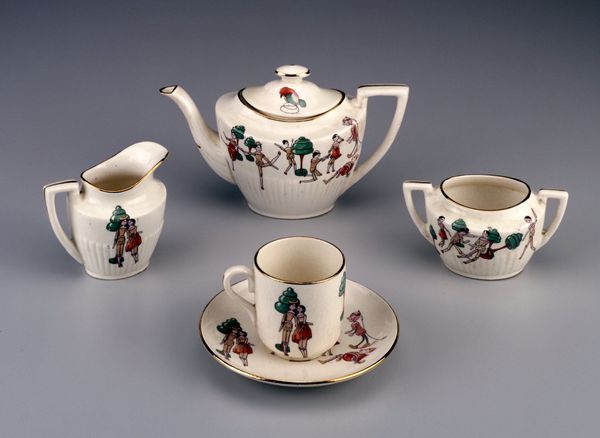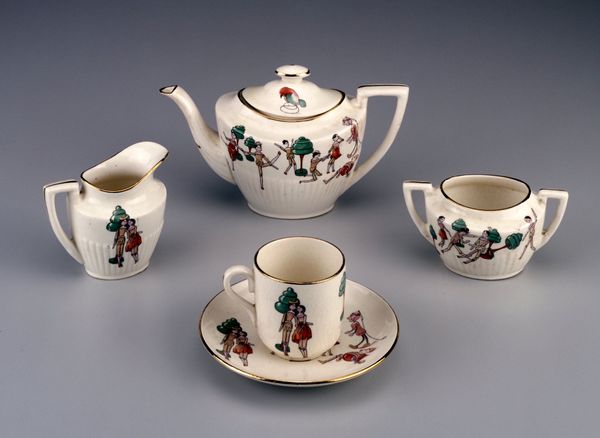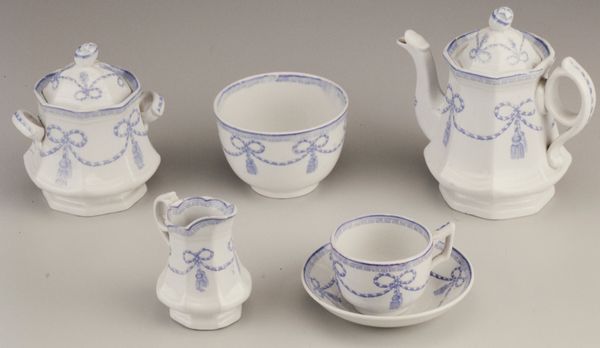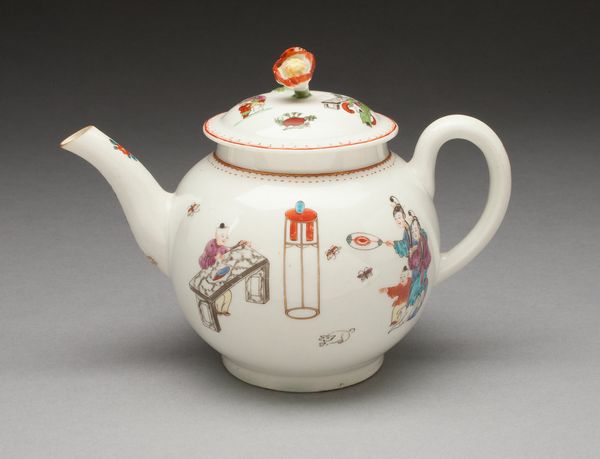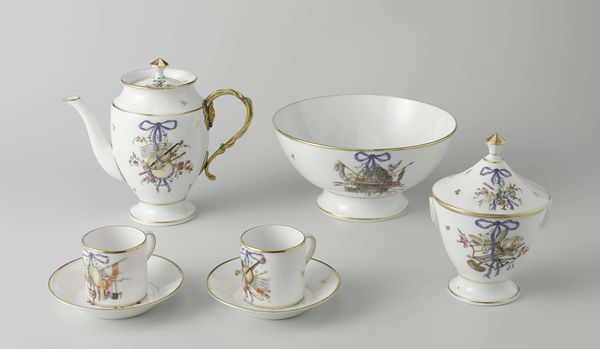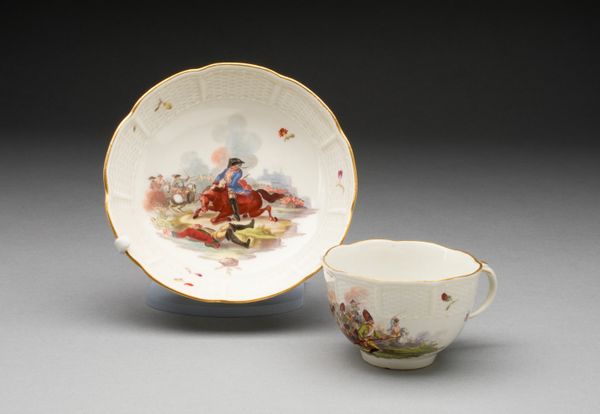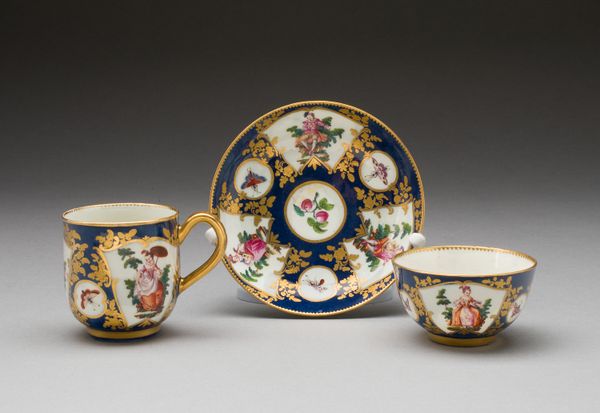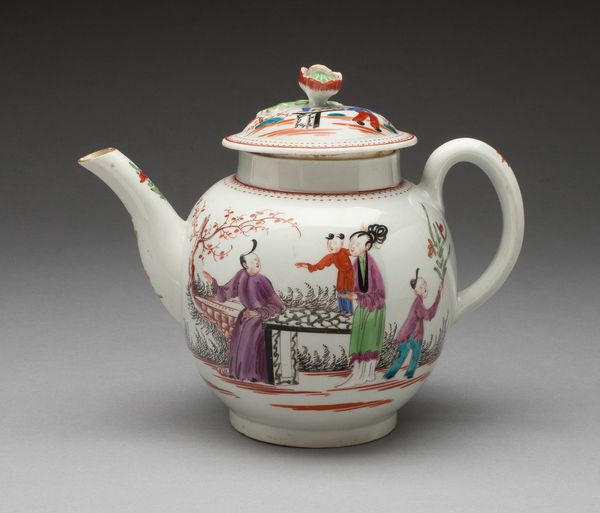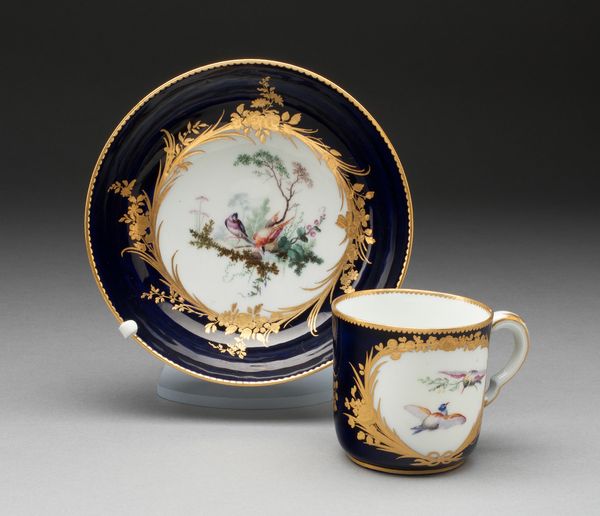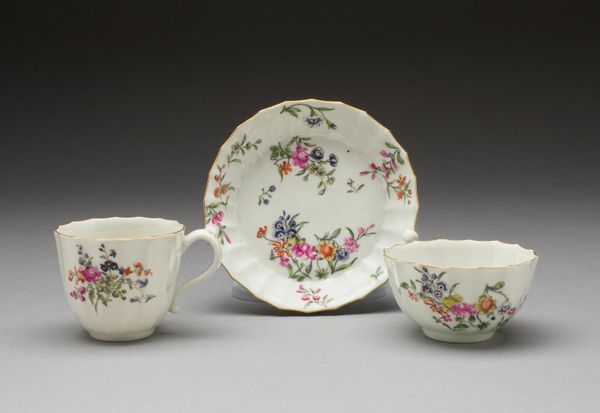
ceramic
#
ceramic
#
decorative-art
Dimensions: 3 x 3 1/4 x 2 1/8in. (7.6 x 8.3 x 5.4cm)
Copyright: Public Domain
Curator: How utterly charming! There’s an almost unsettling innocence about this ceramic tea set. It reminds me of childhood games and fairy tales tinged with something darker, perhaps? Editor: It is a captivating piece, indeed. This is the "Penny Woodens" tea set, created by S. Fielding and Company between 1913 and 1917. What we're looking at is a quintessential example of decorative art that embodies social and cultural themes popular during its era. Curator: What strikes me most is the illustration style. The figures – are they children, sprites? – seem caught between graceful movement and clumsy falls. Their gestures speak to playful freedom, yet there's a stark angularity in their depiction that's both alluring and slightly eerie. What symbols resonate in this “Penny Woodens" set? Editor: I think those angularities have to be read through the production methods of the era as well. It allowed mass production to occur. In the early 20th century, the idea of childhood was heavily romanticized but it also existed alongside stark realities for working-class families. Penny Woodens taps into the symbolic imagery of that childhood innocence. The figures dance, frolic even, around these somewhat imposing, formalized trees, a recurring motif of the Woodens designs. These idyllic, yet simplistic forms perhaps represent the longing for escape. Curator: The repetition of that small, green stylized tree symbol is potent. Trees, of course, traditionally signal life, growth, stability but its unnatural form introduces a degree of artifice. I think of them as barriers even. In a symbolic visual language of folklore, this reinforces the psychological push-pull that the children embody as well. Editor: Absolutely. What’s more, the pieces themselves -- teapot, creamer, sugar bowl – speak to rituals of domesticity and gentility. Tea time as an emblem of social gatherings, perhaps subtly hinting at the social strata these objects occupied. This wasn’t mere mass-produced porcelain, but aspiration carefully wrought to reach an emerging middle class. Its imagery romanticizes but its context reveals so much. Curator: Exactly. Looking beyond mere surface, it reminds us of the layers beneath even the most innocent looking artifact. The enduring echo of culture made visible in ceramic, from which to take pause, to ponder even a simple tea party’s potential narratives of privilege and access. Editor: A beautiful observation. When considering art objects and history, it reminds us of their intricate entanglements; it allows for us to see beauty but not separate it from meaning.
Comments
No comments
Be the first to comment and join the conversation on the ultimate creative platform.
